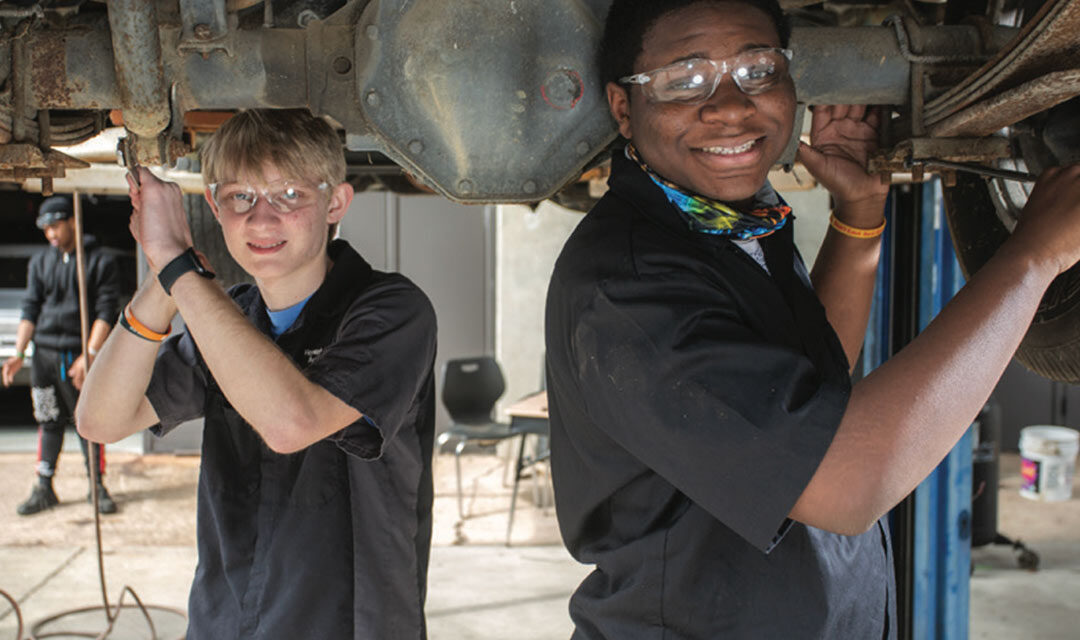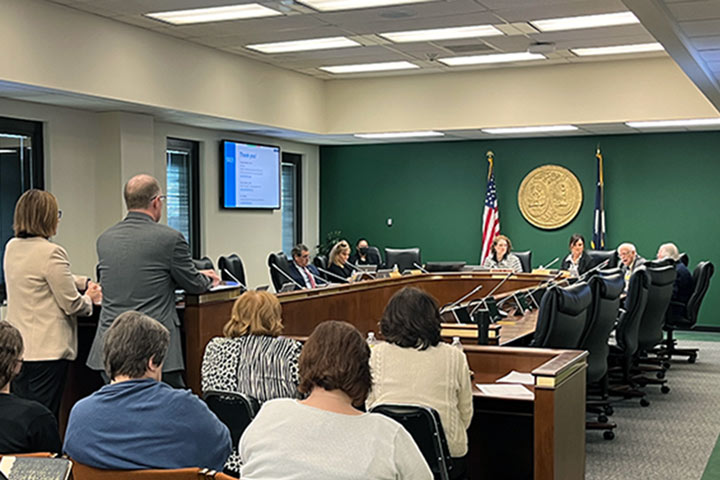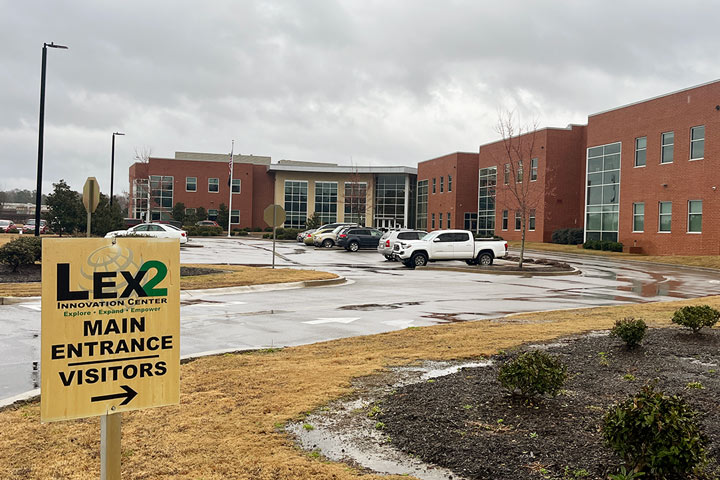Two students in Richland One work under a vehicle in a mechanics class. (Photo courtesy of Richland School District One)
South Carolina’s high school career and technical education programs are underperforming — except in the Midlands.
In Columbia-area schools, 96.75% of students in those programs go on to college, into the military or into related work, according to a recent state assessment.
That’s not true in other regions. The state’s Education Oversight Committee on Monday heard about shortcomings across the state.
There are “significant gaps” between what students learn and what local employers are looking for, according to Dale Winkler, vice president of school improvement for the Southern Regional Education Board (SREB).
Students in other states graduate better prepared for the job market, Winkler said. Some credentials considered “career ready” by South Carolina are considered “introductory” in other states in the region.
Winkler presented those findings during the meeting Monday after he and his colleagues worked with the state for two years. South Carolina hired the SREB to assess its programs and help improve and better support the state’s high school students.
Atop the to-do list? Creating better relationships between school districts and potential employers and communicating better with students and parents.
Richland School District One and Lexington School District Two are already doing this.
“Through advisory committees (with area business and industry leaders), we ensure our instructors and programs are kept up-to-date on trends relevant to their prospective industries,” Joni Coleman, director of Lexington Two’s Innovation Center, said in an email.
Those programs offer career clusters, which are course pathways in the desired work field. Career clusters set up students to enter the workforce or to attend a two- or four-year college.
Richland One is one of the state’s few districts that offers programs in all 16 of the state’s outlined career clusters.
The Lexington Two Innovation Center offers a wide variety of programs, including digital design, culinary arts, engineering, auto technology, cosmetology and barbering, firefighting and health and sports medicine.
Richland One offers career and technical programs or courses at each high school. The district also has a stand-alone school, Heyward Career and Technology Center.
Having those resources available in one district is rare for the state, said Chris Dinkins, Richland One’s director of career and technical education.
The school district’s success in career and technical education is multifaceted. “Real, keen awareness” of those programs within the community and the school district as well as comprehensive, assistive visuals such as brochures help greatly, Dinkins said.
The districts around the state that have underperforming programs struggle with a lack of community awareness and economic resources. They also might have fewer industries in the area and less contact with those industries.
The idea, in short, is to not give students a “false sense of hope” about hireability and career readiness post graduation, Winkler said.
“It hurts me to see children who are talented (but don’t) know about the opportunities that are out there,” Education Oversight Committee Chair Neil Robinson Jr. said.
The state Education Oversight Committee met Monday and discussed improving career and technical education programs across the state. (Photo by Margaret Walker)
Lexington School District Two’s Innovation Center is one of the Midlands’ standout career and technical education schools. (Photo by Margaret Walker)




